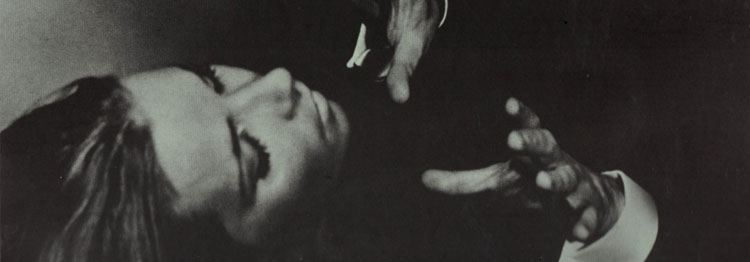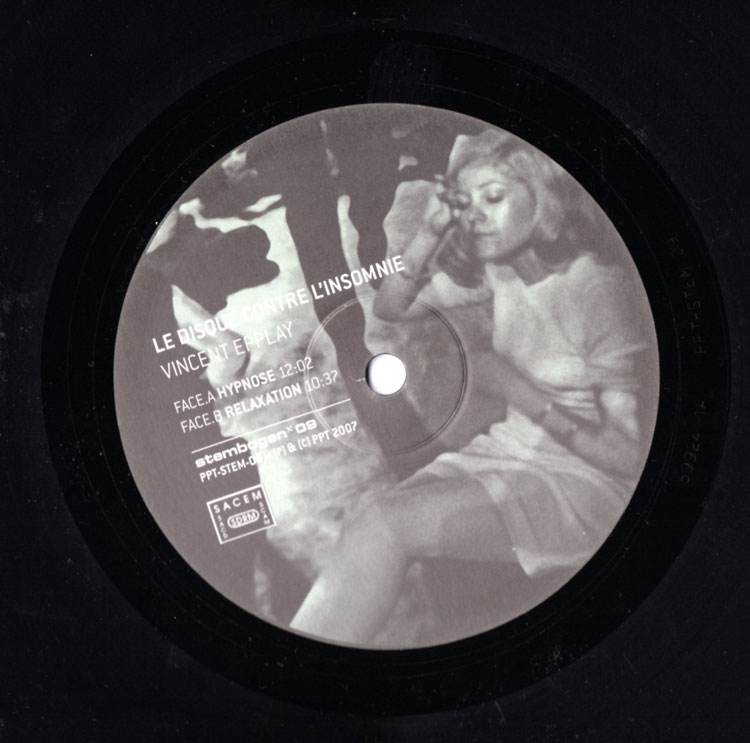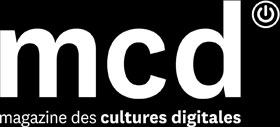hypnotherapy method…
The presence and continuous development of technology in the music field will not have gone unnoticed, yet one could wonder about the lack of consideration as concerns the impact on contents, i.e. the normative trend induced by the generalisation of the computer tool as a means of production, distribution and listening.

Through the « modelling » phenomenon, this global and deep movement indeed conditions the entire music sector so as to de facto exclude some music. Eventually, with regard to the deployment of new media, the frantic emergence of new products, the fetishism about equipment, etc., one can also question the nature of listening and relating to music …
The vinyl or K7 revivals, as nice as they may occasionally be, are often expressed as a misunderstanding of digital formats (no, the CD is not bad; yes, digital amplifiers are on a par with transistor or tube equipment etc..) whilst they are still being conditioned by the latter, not to mention a form of nostalgia or a fad accompanied by a fantasy of subversion …
If the plurality of modes of production, distribution and listening seem conducive to a diversity of creation (including the auditor’s active involvement), unfortunately, in some respects, it also conceals standardisation phenomena. The audio hardware market is experiencing some effervescence … It may not be customary to pay for acquiring music itself, but it is usual to purchase €300 headphones so as to listen to MP3s…
The technique is the dominant factor in our society, it fundamentally shapes it (even before economics – that guides its applications, enhances some of its effects etc. – and politics). We are referring to Jacques Ellul on this topic (instead it is usual to observe this kind of influences: economical, political, scientific, cultural). Any technique integrates negative and positive aspects, but in such a way that it makes it hard to separate them.
Faced with the usual arguments of the advent of new audio techniques (the accessibility of production, distribution and, lastly, the works), one should note how the technique does not only induce emancipatory effects. How can we be blind to the fact that technology is also a catalyst for the continuous flow of the global machine in an automatic mode, continuously fed by a succession of interchangeable contenders and their farmed music; obviously sustained by the market and the disguised monopolies of large groups?
Regarding production, unlike what the digital context may suggest, we do argue that setting up « labels » still has some relevance (even more so) today but let us remember that when the profile of such activity (or a publishing house) is akin to craftsmanship, it is not supposed to exist in relation to the established systems. This is an impossible economic model – if we put a little awareness in the ins and outs – even though one can find tricks, play with constraints, integrate the « crisis » into the project. In this context, the technical facilities have not made the practice more viable (on a global scale), nor do they guarantee a quality of production.
A development which has repeatedly been commented upon involves a single individual, who without leaving home, can consolidate the entire music production chain from composition to the negotiating of rights via the promotional clip and up to public retailing. Faced with the idiocy of majors labels, this easy « all-in-one » solution is obviously attractive (though dominant circuits were quick to adapt and incorporate this aspect), but it can also overshadow the interest in collaborative modes inherent to former processes (sound engineer, producer, arranger, etc.)..
Here, we encounter the human propensity to opt for an easier practice, and the question of creative freedom. If it is possible to overcome the tutelage of a producer or a label, one nevertheless suffer the constraints of a technical (and commercial) system…
Production can be formatted both by the used tools as by the prospect oft the practical distribution. This standardisation – which, of course, may also result from a collective deed – of the project to the limits of a dominant system (excessive compression, etc..) is not necessarily conscious …
It is, of course, out of the question to validate the principle of division of labor whose horrors we know well. Functions should not be closed up – a history of provisions not of assignments. Besides, a single author might impose on himself a division of labor not dedicated to the artistic project… Projects must define the systems and not vice versa – which does not prevent anyone from toying with the established conventions. Cinema is full of examples of producers and writers who have demonstrated skills specific to each other’s field, etc.. As stated elsewhere, what makes art is constantly shifting and is not the sole fact of authors (questions of freedom). It is always enlightening to move between the different levels (author, label, distributor, store …), trying for example to examine the functions of each one in the light of the others (this also applies to other areas).
When it comes to audio media, unlike the dominant ideas, the CD is still the easiest way to listen to properly rendered music. Once again, we encounter the human propensity to search for convenience before the best option, if this was not the case, the MP3 would have been restricted to non-musical uses. If you however wish to use a « dematerialised » file (which always requires a great amount of equipment), a « correct » audio rendering still shows a significant difference with the simplicity and reliability of a CD set up (to near the CD quality, you will be faced with quite a few technical issues), knowing that we must also take into account the cost of HD tracks when cheap CD availability is infinite. This, of course, only applies if you are caring about things like fine orchestral works, etc.. Obviously when it comes to pop music calibrated for the MP3, differences are smaller …
A vinyl / CD quarrel from another era is no longer relevant, and in fact I can not imagine some projects (such as Epplay on our label) or music (such as the skweee) other than on vinyl. However one should avoid comparing the sound of a cheap CD player to an upscale turntable… In many ways the CD has advantages we cannot all list here. For example, for some music, not to hear the surface friction is more important than what vinyl (sometimes deceivingly) provides. Finally, when observing the vinyl trend, one will notice countless new followers who share their disappointment on dedicated forums… Eventually, there is nothing intrinsically wrong with the vinyl and this is just about balancing the debate …
Dematerialisation might seem relevant with regard to arts and music … But something remains physical, a parasite aesthetic, etc.. Some projects rather opt for integrating the physical elements, to toy with them rather than suffer by convention. Therefore no objections should be maintained between the media; we should rather see a range of resources whose specificities it may be interesting to explore and mix to reach various objectives. The contribution of digital tools is undeniable in terms of field for experiments they opened for modes of composition, collaboration, sharing, listening… From a « consumer »‘s point of view, there is also a complementarity between the different proposals for different uses.
To return to the questions of sound reproduction, one can avoid falling into the trap of an elitist delirium – besides the hi-fi has become more accessible and we can enumerate many other unnecessary expenses, destructive ones even, that will end up costing more. On the other hand, numerous music are clearly being distorted by their means of diffusion to the point of losing their interest, their singularity. On occasion, on could also hear a clumsy performance or composition which in fact was caused by a weak rendering of the attacks or fades of the notes…
This is not about asserting how music should be listened to, or fantasise about a piece in its pristine origin, but about noting that this music is often altered without one having the choice or being aware of it: we can choose to read a book by fragments, but no one would accept a book that was distributed with modified vocabulary or missing sentences… However, many items of music only exist though their media. So if the quest for the identical sound from a studio to a listener is unrealistic (and what is more not necessarily desirable), we postulate that there is a decent, but relative, subjective, empirical minimum.
By improving the quality of reproduction we could certainly attract further audiences, the music is primarily a phenomenon of sound and not to properly render its carnal dimension will result in the indifference from the listener. Faced with these sound quality problems, there is also the lo-fi production option, usually a sign of an emergency, an indifference to « clean » sound or a rejection of digital tools, but this posture – bound to generate as much fetishism – does not solve the problem of rendering: are we to listen on a lo-fi or hi-fi system (which perfectly replicates the nature of the project)?
Our listening process is so tied to the technique that we sometimes listen more to the technique than to the music. For instance, in some concerts the amplification power compensates for the poverty of artistic proposal (and/or responds to a dominant/submissive game beyond any musical concerns, unless a reality of the concert, obvious in some cases, is being expressed there). One could see here an unexpected attraction to the noise experienced by transfer… just like a repressed sexual orientation experienced by transfer.
In this sense noise music is a significant link to our world, and though this direct confrontation with the technique, if properly conducted, it constitutes its aesthetic awareness, touching sensitive areas the dominant musical purr cannot fathom… This is the use of technology as a (re)activation of sensitive and mental areas versus the « prothesis » or « atrophy » techniques.
Denis Chevalier
Cofounder and Art Director of PPT et of the Stembogen label
> www.e-ppt.net
published in MCD #70, “Echo / System : music and sound art”, march / may 2013
> Version Française







